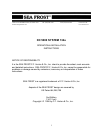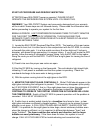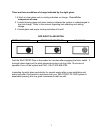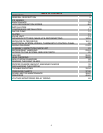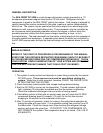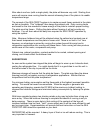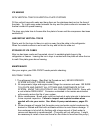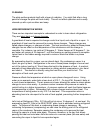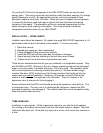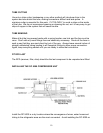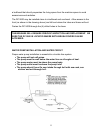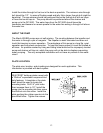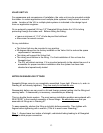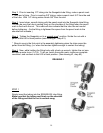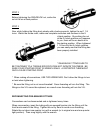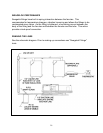7
ICE MAKING
WITH VERTICAL TRAYS ON VERTICAL PLATE SYSTEMS
Fill the vertical trays with water and hang them on the stainless steel rod on the face of
the plate. Try to get some water between the tray and the plate surface to increase the
thermal contact to speed freezing.
The trays may take time to freeze after the plate is frozen and the compressor has been
switched off.
HARVESTING VERTICAL TRAYS
Plan to wait for the trays to thaw in a sink or away from the plate in the refrigerator.
When the outside surface is wet invert the tray and let the ice slide out.
STORAGE OF ICE CUBES
After ice has been made and harvested, store it in sealable plastic bags in the
refrigerator or freezer. Leaving the ice in trays in contact with the plate will allow the ice
to melt if the plate goes above freezing.
MAINTENANCE
Like your engine, your SEA FROST needs periodic checking.
ROUTINELY CHECK:
1. The refrigerant charge. (See Start Up Procedure text) NEVER OPERATE
SYSTEM WITHOUT PROPER CHARGE.
2. All components, bilge and engine room fittings for corrosion and wear. BE SURE
TO LOCATE AND INSPECT ALL FITTINGS AND COMPONENTS IN THE
SYSTEM. KNOW THE LOCATION OF ALL CONNECTION POINTS. Spray with
a rust inhibitor REGULARLY. Corrosion unchecked in the marine environment
will severely reduce the life of your system.
3. Motor maintenance. Brush wear must be checked at early intervals to determine
future required inspection. Failure to inspect and replace brushes when
needed will ruin your motor. See: Motor & pump maintenance, pages 39-
40.
4. Winter storage will require that the water pump and water-cooled condenser be
drained or flushed and filled with antifreeze solution to avoid freeze damage. If
the condenser is to be left dry flushing with a large amount of fresh water to
remove salt deposits is recommended. (The pump will not self-prime. It might
be necessary to install a hose and funnel on the intake to force-feed the pump.)



